Fashion draping is an important part of fashion design. Draping for fashion design is the process of positioning and pinning fabric on a dress form to develop the structure of a garment design. A garment can be draped using a design sketch as a basis, or a fashion designer can play with the way fabric falls to create new designs at the start of the apparel design process. After draping, the fabric is removed from the dress form and used to create the sewing pattern for the garment.
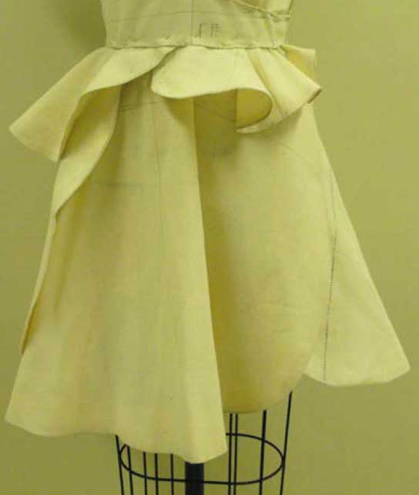
Image from “EBook Photo Draping” by Valerie Corr
Fashion draping and fitting are usually done with muslin (an inexpensive, unbleached, loosely woven cotton) to resolve any design and fitting issues of a garment before cutting the pattern in real fabric. However, it is important to drape using a fabric that has similar drape characteristics (the way it falls and folds) as the real fabric of the finished garment. Muslin comes in a variety of weights, and inexpensive synthetic fabrics can also be used in fitting and draping for apparel design.
Fashion designers drape garments in sections i.e.: front bodice, back bodice, front skirt, back skirt etc. and only the right side of the garment (when worn) is draped, unless the apparel design is asymmetrical.
The general process for how to drape for fashion is as follows:
Pieces of muslin are cut and prepared. This includes measuring, tearing, blocking, pressing, and marking grain lines and other important reference lines.
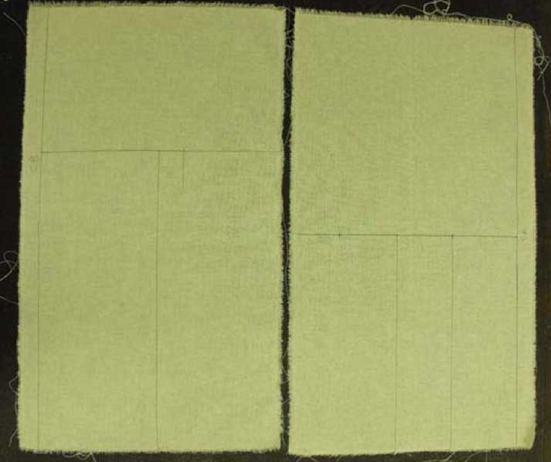
Prepared muslin- Image from “EBook Photo Draping” by Valerie Corr
Now the actual “draping” begins. The fabric is pinned to the dress form and positioned to form various darts, tucks, gathers, etc., which give shape and fit to the garment.
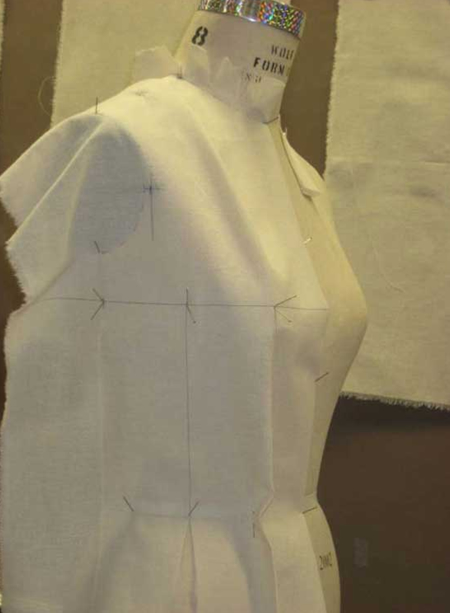
Garment draping- Image from “EBook Photo Draping” by Valerie Corr
Once the desired design is achieved, the muslin is marked while still on the dress form to indicate where the seam lines, darts, etc. are located on the fabric.
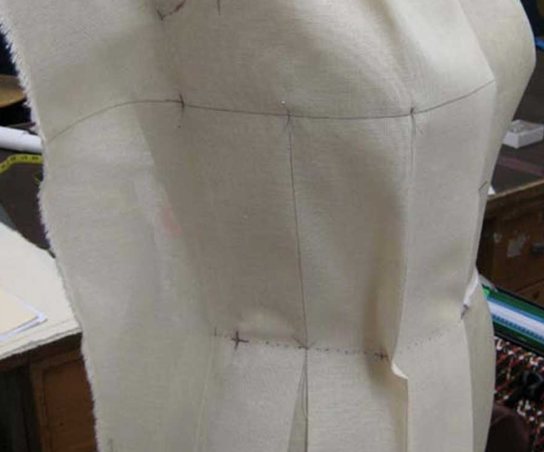
Marking muslin – Image from “EBook Photo Draping” by Valerie Corr
When marking is finished, the muslin is removed from the dress form and laid flat on a table for “truing”. Truing is the process of using rulers and design curves to connect, smooth out and finalize the markings.
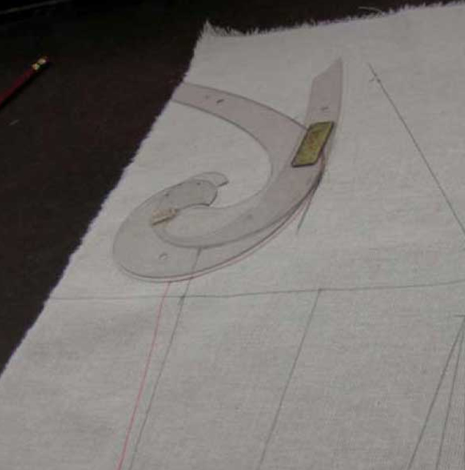
Truing muslin – Image from “EBook Photo Draping” by Valerie Corr
Once truing is complete, seam lines are added and excess material is cut away.
The muslin is then pinned together (with all darts pinned) and placed back onto the dress form to check for fit accuracy and to drape any additional parts of the garment.
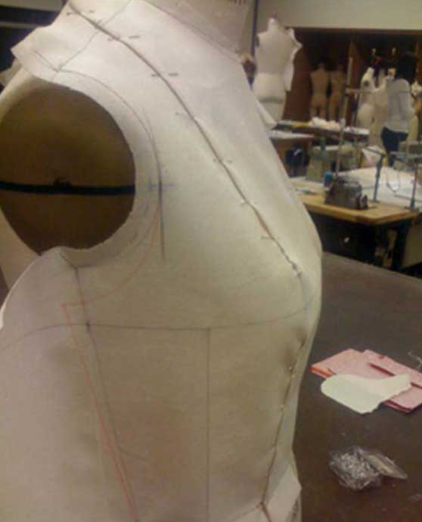
Muslin pinned to dress form – Image from “EBook Photo Draping” by Valerie Corr
Once all pieces are the garment are draped, they are all pinned together and placed on the dress form to check for fit accuracy.
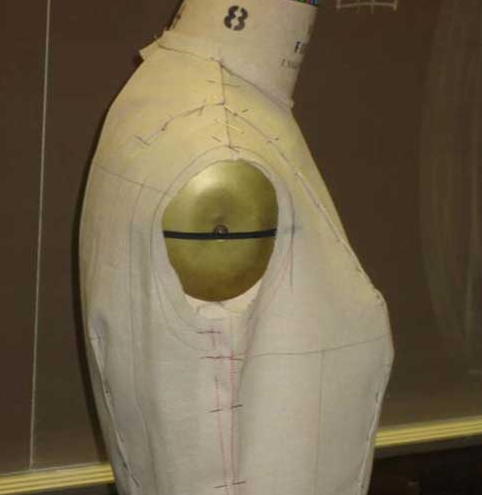
Check for fit accuracy – Image from “EBook Photo Draping” by Valerie Corr.
When the apparel designer is satisfied with the look and fit of the pinned garment, the muslin is removed from the dress form, pressed flat, and all seam lines, grain lines, markings, notches, etc. are transferred to paper, creating the sewing pattern for the garment.
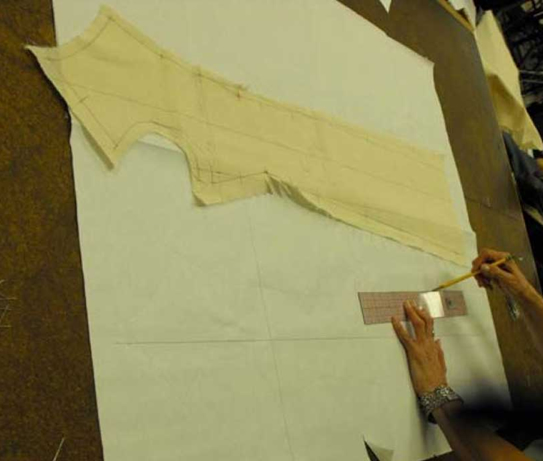
Transfer to paper sewing pattern – Image from “EBook Photo Draping” by Valerie Corr
Why Should Fashion Designers Learn How to Drape?
While the majority of companies in the fashion industry no longer use draping as part of the design process, draping is a key skill which allows apparel designers to understand what creates a great fit and how to achieve it. If a garment sample fits poorly, a designer who is familiar with how darts and seams give shape to garments can spot what is creating the fit issue and advise the factory how to correct the problem.
However, the art of draping isn’t completely lost; in high fashion, couture fashion houses, evening, and lingerie companies most garments are created through draping. When draping a garment, the designer can immediately see what her apparel design will look like on the body, and immediately correct any fit or design problems before putting anything down on paper. In addition, some apparel designs are just impossible to make via flat patternmaking and need to be draped first. And some fabrics need to be experimented with on a dress form to see how they behave.
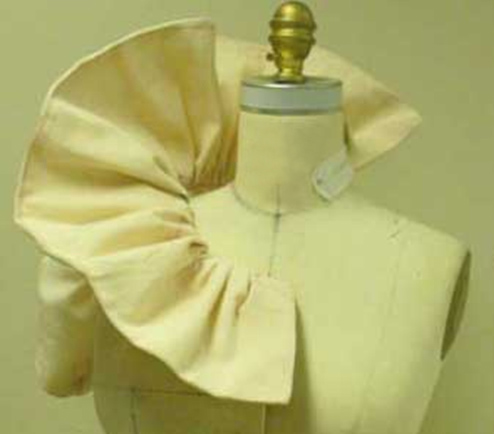
Fashion draping – Image from “EBook Photo Draping” by Valerie Corr
While draping for apparel design may seem like a daunting and tedious approach to creating patterns, it’s actually one of the more creative parts of the fashion design process. Apparel designers can experiment with fabric, and decide where to place darts, tucks, and other design elements. Playing with the way fabric folds and hangs on the body is a fun way to create new fashion designs that you wouldn’t have thought of sitting in front of a sketchbook!

